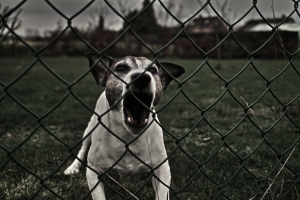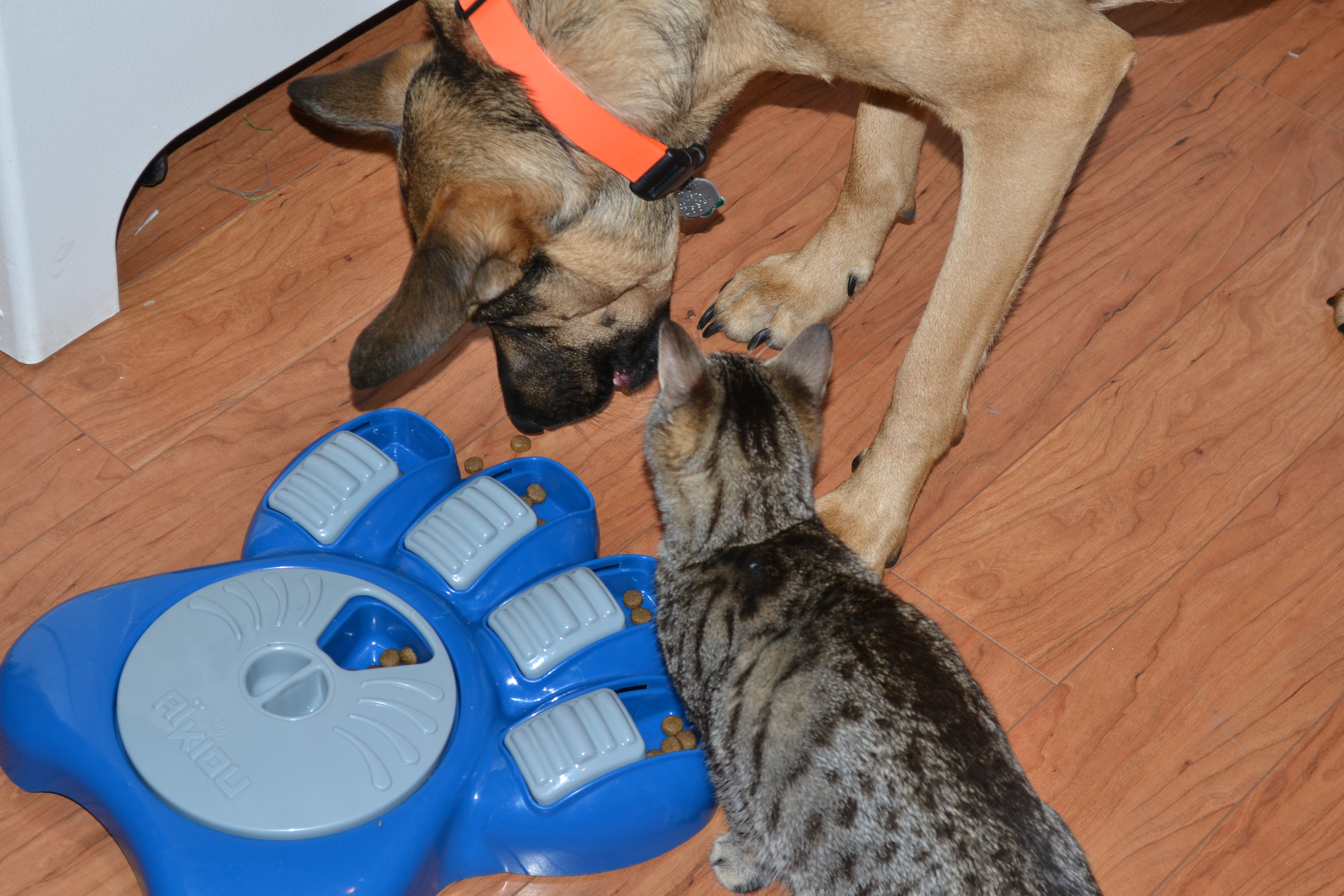 Reactivity is usually due to fear and insecurities about how to behave in a certain situation. Instead of running away, the dog tries to scare the “trigger” (object or animal that causes the reaction) away. Unfortunately, the reaction that dogs resort to (barking, lunging, etc) are typically interpreted as the dog is being “dominant” or “aggressive” instead of just showing fearful behaviors. Barking and lunging are what dog trainers call “distance increasing behaviors” which means the dog wants the distance between itself and the trigger to get larger.
Reactivity is usually due to fear and insecurities about how to behave in a certain situation. Instead of running away, the dog tries to scare the “trigger” (object or animal that causes the reaction) away. Unfortunately, the reaction that dogs resort to (barking, lunging, etc) are typically interpreted as the dog is being “dominant” or “aggressive” instead of just showing fearful behaviors. Barking and lunging are what dog trainers call “distance increasing behaviors” which means the dog wants the distance between itself and the trigger to get larger.
If your dog is reactive to humans, there should be a lot of proactive and preventative measures set in place for the safety of the humans and the dog. Here are some basic things your dog should know before you bring a new human into the equation:
- Dog should have a safe place so that they cannot get to the human (crate, pen, tie up)
- Dog should be comfortable with having a muzzle on (this is a must have skill especially in the event of an emergency)
- Dog should be familiar with clicker training and have some basic commands under their belt
The human should also work on some basic skills to apply counter conditioning techniques to the situation in a correct manner:
- Know how to apply Treat and Retreat techniques, Click the Trigger, and Behavior Adjustment Training
- Know basic dog body language to judge the dog’s comfort level
As you can see, there is a lot to think about and prepare for before introducing your reactive dog to a person. With time and dedication, it is possible, but you must be committed. Introducing a reactive dog (fearful dog) to new people should not be taken lightly so please don’t set your dog up to fail and possibly get someone hurt
SECRET ANNOUNCEMENT:
I’ve got a new project in the works that will help dog owners with their reactive dogs! Be sure to “Like” my Facebook page to be the first to know when it is officially announced!



